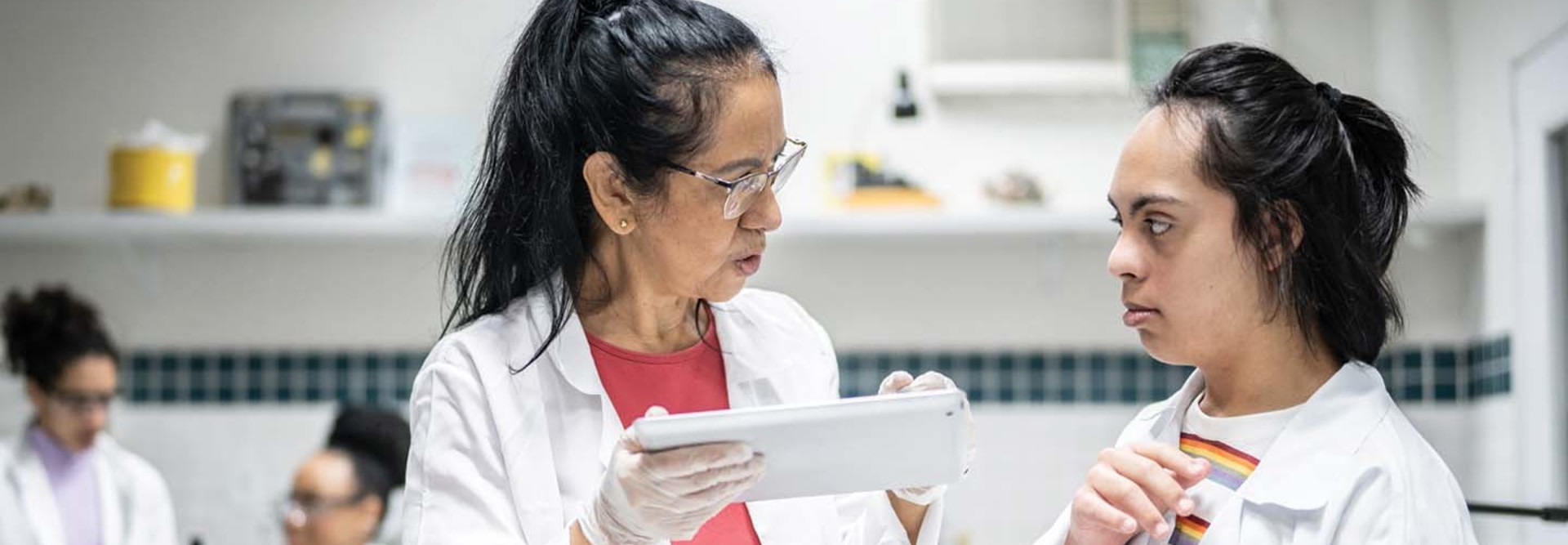2. Be the Accessibility Leaders Disabled Students Need
Not all IT departments have the awareness and knowledge they should when it comes to accessibility. That needs to change, especially with the rise of hybrid learning. They need to be educated and trained. “It would be beneficial for them to be knowledgeable. Even if they don’t necessarily know how to do it themselves, they should at least know that it exists, where to find it, where to point people for the resources, or if there’s other people on campus that are familiar with it,” says Bill Casson, a digital accessibility specialist at the University of Denver.
They can also then train other advocates. “Staff are just so underutilized as allies for students with disabilities,” explains Morgan. “There are so many staff on campus who want to know what they can do to support students with disabilities, even though that’s not their position.”
RELATED: How to bridge the digital divide in higher ed.
3. Campaign Early for Accessible Technology
IT departments may oversee day-to-day use of campus technology, but they don’t always get to weigh in on what technology a school decides to purchase and use. This can lead accessibility-minded IT teams to receive tools which lack features to help students with disabilities. “I see a lot of departments not considering accessibility in the procurement process. They’ll buy a product and say, ‘Oh, that doesn’t work for people with disabilities? That’s unfortunate,’” says Casson.
As the increasing shift to hybrid models calls for new technology and workflows, IT should be part of any selection team as early as possible to champion technology with accessibility features. “Accessibility needs to be something that’s thought of throughout the entire product lifecycle,” says Casson.
Involving individuals with disabilities will also be important. “They are going to ‘see’ some things that able-bodied people may not see,” says Loudd.
DISCOVER: Improving accessibility for students and faculty with disabilities.
4. Think Proactively to Ensure Class Equity
Creating frictionless learning experiences for students with disabilities requires proactive thinking. One example: If a syllabus includes a book not available in a digital format, someone who is visually impaired needs to order it, then send it to be unbound, scanned and digitized for a screen reader. If a syllabus isn’t made available early enough, that process can compromise the student’s learning in the first few weeks of a course. Scenarios like this can be avoided by involving people with disabilities in the conversation. “You cannot make things fully accessible to a person with a disability unless they let you know what they need,” says Loudd.
Loudd says that if IT can help faculty prepare in advance “so that people from Student Accessibility Services are able to look over it and just make sure they are accessible, it really could save a lot of time.”
EXPLORE: 4 barriers to achieving digital equity in 2022 and how to overcome them.
5. React Whenever the Conversation Changes
Being proactive is important, but there’s no way to prepare for every disability. “You can’t actually universally design everything for all people, all the time,” says Morgan. “You do have to be reactive sometimes.” This requires constant evolution and improvement, especially with the growing pains that accompany the adoption of hybrid learning. This requires listening. “What you think may work may not work at all in everyday lived experience. Be open to revisiting the conversation as many times as it changes to make it accessible,” says Loudd. “As far as technology, there is no one-size-fits-all accessibility. You have to just keep incorporating access for as many different types of disabilities as possible when you’re trying to make things exist.”
This process might seem daunting to some, but forward progress is the goal. “People get a lot of fear around adopting accessibility because they just don’t understand it. A lot of times they seem to think, ‘This is something else I have to learn? I don’t have time for that,’” says Casson. “It’s often not quite as hard as people think it’s going to be.”
MORE ON IT: Make IT empowering for students with disabilities.











